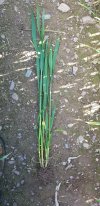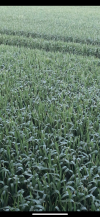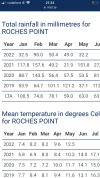You are using an out of date browser. It may not display this or other websites correctly.
You should upgrade or use an alternative browser.
You should upgrade or use an alternative browser.
Winter wheat 2022
- Thread starter gone
- Start date
Crops
Well-Known Member
I’d love to pop over for a look in a week or two, that’s seriously clean looking.View attachment 107431View attachment 107432View attachment 107433
Late November sown Mayflower looking clean and even. Being only about 1km from a notoriously foggy coast it is a good test of this new variety. Due its T2 next week.
rustymcsocks
Well-Known Member
Call away anytime.I’d love to pop over for a look in a week or two, that’s seriously clean looking.
Blackwater boy
Moderator
The sowing date would have a huge impact there I’d imagine. Remarkably clean tho. What septoria rating has it provisionally got?View attachment 107431View attachment 107432View attachment 107433
Late November sown Mayflower looking clean and even. Being only about 1km from a notoriously foggy coast it is a good test of this new variety. Due its T2 next week.
rustymcsocks
Well-Known Member
From UK data it has a score of 8.The sowing date would have a huge impact there I’d imagine. Remarkably clean tho. What septoria rating has it provisionally got?
I'd imagine the late sowing is a help too. Looks one to watch though.
Crops
Well-Known Member
It’s one that I have very high hopes for. In reality it’s going to be autumn 23 at the earliest before it’s going to be widely available.From UK data it has a score of 8.
I'd imagine the late sowing is a help too. Looks one to watch though.
Grain quality is milling spec so high Kph with very good sprouting resistance. A little bit early. Good on mildew and rust also.
Interestingly it has an Eyespot resistance gene which we haven’t seen since the variety Grafton.
I’d expect it to be a couple of percent behind the yield of Dawsum & Graham but it could be very useful under tough Septoria conditions.
It appears to be getting its Septoria resistance from more than one Gene too so this should be more robust than a single Gene.
nashmach
Well-Known Member
I am not sure what difference it makes, if any, it has happened 3 years that I can remember and I don't remember it being an issue any of those years.
I am of the firm belief that wheat yield is decided in June and all we can do till then is to keep as much potential in the crop as possible and then wait for the weather in June.
There is some potential lost in all my wheat this year, but not massive amounts in any of it. Some of it is thin, poor seed and sower, all my fault, I chanced using some of last year's seed and it was the first bit the drill sowed, I should have sown it heavier. Some has too much BYDV. All was sprayed with Alister flex and I will not be doing that again unless I have to. It is too tough on the crop.
But overall I see good potential if the weather comes right, I got the disease spray timed nicely and it is clean, the slightly reduced fert seems to have worked well, so I am hopeful if the weather is kind in June.
I'm a WW virgin so hopefully haven't made a pure balls of it.
Like you I used Alister here, the stuff must be a close relation to Roundup when you see what it does in poorer/wet areas of fields. I'd be reluctant enough to use it but it serves a purpose. I also think I could have went earlier with N but whether that harms it who knows.
Coming from growing barley for a long number of years together with some oats in recent times, it's been a steep learning curve.
gone
Well-Known Member
Is your wheat after Oats?I'm a WW virgin so hopefully haven't made a pure balls of it.
Like you I used Alister here, the stuff must be a close relation to Roundup when you see what it does in poorer/wet areas of fields. I'd be reluctant enough to use it but it serves a purpose. I also think I could have went earlier with N but whether that harms it who knows.
Coming from growing barley for a long number of years together with some oats in recent times, it's been a steep learning curve.
It is the hungriest slot, I always try to get a bit on wheat after Oats as early as I can, never in a rush after beans, OSR or peas.
nashmach
Well-Known Member
Is your wheat after Oats?
It is the hungriest slot, I always try to get a bit on wheat after Oats as early as I can, never in a rush after beans, OSR or peas.
It sure is and the most advanced field had oaten straw on it for nearly 5 weeks. I definitely would not do that again if I could....
Crops
Well-Known Member
I’d say you’ve picked a great year to start. You have a good variety and it looks clean so far in terms of Septoria.I'm a WW virgin so hopefully haven't made a pure balls of it.
Like you I used Alister here, the stuff must be a close relation to Roundup when you see what it does in poorer/wet areas of fields. I'd be reluctant enough to use it but it serves a purpose. I also think I could have went earlier with N but whether that harms it who knows.
Coming from growing barley for a long number of years together with some oats in recent times, it's been a steep learning curve.
I’ve always been wary of the herbicides like Alister and the like as I don’t like the hits I’ve seen them give crops - they are very handy & price competitive if you have brome/wild oats/vol oats and the likes.
I was doing up some crop margins the other day and couldn’t believe how cost competitive Tower is. The autumn residuals seemed to work really well this year - probably due to the relatively low winter rainfall.
Blackwater boy
Moderator
All you’ll have left is the 2 wheels of the sprayer when you go out to the yard in the morningView attachment 107517View attachment 107518
Some Diego. It’s surely classed as a heritage wheat at this stage. I’ll happily use Questar next year if I get a gilet and some stationary.
Ags11
Well-Known Member
I used Questar this day week ago. Luckily I’d rinsed out afterwards, l always find folpet can go a bit cakey like bravo in nozzles.
Given the wind and showers l haven’t been out since - plan to early in the morning.
🤞🤞
There’ll be plenty of cursing if I’ve dripping nozzles!
Given the wind and showers l haven’t been out since - plan to early in the morning.
🤞🤞
There’ll be plenty of cursing if I’ve dripping nozzles!
gone
Well-Known Member
A friend is after running into issues with Questar a good few O rings needed replacement.
Sprayer hygiene is paramount, rinse the sprayer immediately after use and run clean water through the nozzles.
It will play havock with the very modern nozzle shutoff valves and older pipe work if not cleaned straight after use correctly.
Sprayer hygiene is paramount, rinse the sprayer immediately after use and run clean water through the nozzles.
It will play havock with the very modern nozzle shutoff valves and older pipe work if not cleaned straight after use correctly.
nashmach
Well-Known Member
Was over in a neighbour's crops today. The T1 on the wheat worked well, the Graham has 4 clean leaves and the fifth has severe septoria, the Costello has 3 clean leaves, the 4th has bad septoria and the fifth is killed by septoria.
The T1 or T2?
gone
Well-Known Member
Too early to see if the T2 is working, it will be 10 days or a fortnight before it will be possible to see how well the T2 is working.The T1 or T2?
Blackwater boy
Moderator
It’s very odd that ye are talking about high pressure septoria. In your opinion is the chemistry not as effective, varieties slipping, rates not high enough or is the loss of ctl only being felt now? In general it has been a relatively low disease pressure few weeks.Too early to see if the T2 is working, it will be 10 days or a fortnight before it will be possible to see how well the T2 is working.
nashmach
Well-Known Member
Too early to see if the T2 is working, it will be 10 days or a fortnight before it will be possible to see how well the T2 is working.
I'm with you now!
gone
Well-Known Member
We have had a very wet May so far, but would be very happy with the 4 clean leaves on the Graham and happy enough with the 3 &1/2 clean leaves on the Costello, just commented because there was a very visible difference between the varieties.It’s very odd that ye are talking about high pressure septoria. In your opinion is the chemistry not as effective, varieties slipping, rates not high enough or is the loss of ctl only being felt now? In general it has been a relatively low disease pressure few weeks.
Crops
Well-Known Member
That sounds like very good disease control and is what I would expect in terms of difference between the varieties.We have had a very wet May so far, but would be very happy with the 4 clean leaves on the Graham and happy enough with the 3 &1/2 clean leaves on the Costello, just commented because there was a very visible difference between the varieties.
Blackwater boy
Moderator
When was that sowed? My mid October Graham is more like your description of costello and that's after 1.4 of revystar. I would have thought until 2 weeks ago that pressure would have been low enough and since then pressure here lower than ballon area. Either chemicals or varieties are slipping added to the loss of bravo. The powers that be want more grain produced and aiding extra acres etc but did they ever consider how much tonnage is lost in Northern Europe with the loss of ctl.Was over in a neighbour's crops today. The T1 on the wheat worked well, the Graham has 4 clean leaves and the fifth has severe septoria, the Costello has 3 clean leaves, the 4th has bad septoria and the fifth is killed by septoria.









